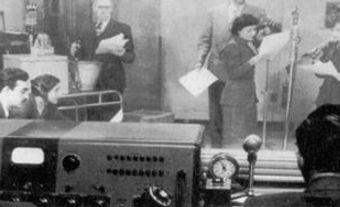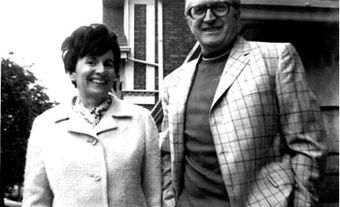Carbone 14
Carbone 14, a theatre company based in Montréal until its quiet dissolution in 2005, produced a style of physical theatre that was formalistic, imagistic and avant-garde. From the beginning it excited audiences and influenced performance art in Québec.
Founded by Gilles Maheu on the bones of Les Enfants du paradis, the mime-oriented street theatre group he formed in 1975, Carbone 14 reflected its director's febrile and eclectic imagination and his interest in a form of expression where action prevailed over text and improvisation over interpretation. Maheu's theatre was one of emotion and physicality in which movement, environment and circumstance played greater roles than text.
Starting in 1981 with Pain blanc, Carbone 14 produced 22 distinctly different works in its 24 years of operation, all commenting on contemporary society. Pain blanc parodied consumer society, Marat-Sade (1984) reflected on revolution, Le Rail (1984) denounced brutality, Le Titanic (1985) was an allegory of collective tragic destinies, Hamlet-Machine (1987) looked at the collapse of ideology, Le Dortoir (1988) explored childhood and memory, and Le Café des aveugles (1992) depicted life in the new millennium. Maheu's later works included a trilogy of dreamlike visual poems created sequentially between 1994 and 1997: La Forêt, Les Âmes mortes and L'Hiver/Winterland. With themes of generation gaps, drug abuse and travel through the icy northlands of spirit and passion, they were metaphors for a ceaseless search for human destiny where visions of exquisite beauty rub against the dark underbelly of raw reality and disillusion.
Maheu has been acclaimed as defining the dramatic form of image-making that distinguishes Québec theatre from theatre in the rest of Canada. Trained extensively with mime artist Étienne Decroux in Paris and director Eugenio Barba in Denmark as well as with voice coach John Devers in New York, Maheu is a visionary whose absorption of European aesthetics helped to redefine Québec theatre.
With a nucleus of faithful artists, Carbone 14, like most Montréal dance companies, also hired artists from various disciplines to fulfil the needs of each piece. Experienced dancers were frequently included in pieces like Le Dortoir, which called for wild, acrobatic physicality. Other works like Peau chair et os (1991) used performers with trained voices. Carbone 14 specialized in lavishly staged dreamscapes in which people moved through non-linear time. Not a dance choreographer, Maheu's instinctive use of the body for its ability to intensify his dramatic ends - and not as a means to an end, as in choreography - attracted some of Montréal's most noted dancers, like ballet dancer Louis ROBITAILLE, to Carbone 14. Robitaille appeared in L'Hiver/Winterland.
Because the company did not have a set repertory system, it was free to expand and contract its runs. In Montréal, it was not unusual for a run to be extended for weeks. Like local dance companies but unlike most theatre companies, it was accustomed to touring internationally. Le Dortoir, its most popular show, toured North and South America, Europe and Australia for 4 years between 1989 and 1991, following Le Rail and Hamlet-Machine tours to Australia, Holland, South America and Chicago in 1988. However, in its final years, Carbone 14 toured Québec with occasional forays to Toronto and Ottawa.
Maheu, his company and collaborators have received many awards. They include a prize for the 1989-90 season from the Association québécoise des critiques de théâtre for his "experimental approach" that influenced theatre of the 1980s, the NATIONAL ARTS CENTRE's special award presented at the GOVERNOR GENERAL'S PERFORMING ARTS AWARDS in Ottawa in 1992, and, the same year, an hommage from CINARS (Conference internationale des arts de la scène/International Performing Arts Conference) for "remarkable international success." In 1995 the Conseil des Arts de la Communauté Urbaine de Montréal awarded the company its grand prize for 20 years of theatrical production, extraordinary contributions to Montréal theatrical life and international renown. The television adaptation of Le Dortoir alone has won several prizes, including a New York Emmy for Best Performing Arts Program. It also took top honours for music and images at the 1992 International Festival of Audiovisual Programs at Cannes, France.

 Share on Facebook
Share on Facebook Share on X
Share on X Share by Email
Share by Email Share on Google Classroom
Share on Google Classroom


